NCAA Championships 2015Apr 20, 2015 by Becca Reed
The Five Things We Learned At NCAAs
The Five Things We Learned At NCAAs
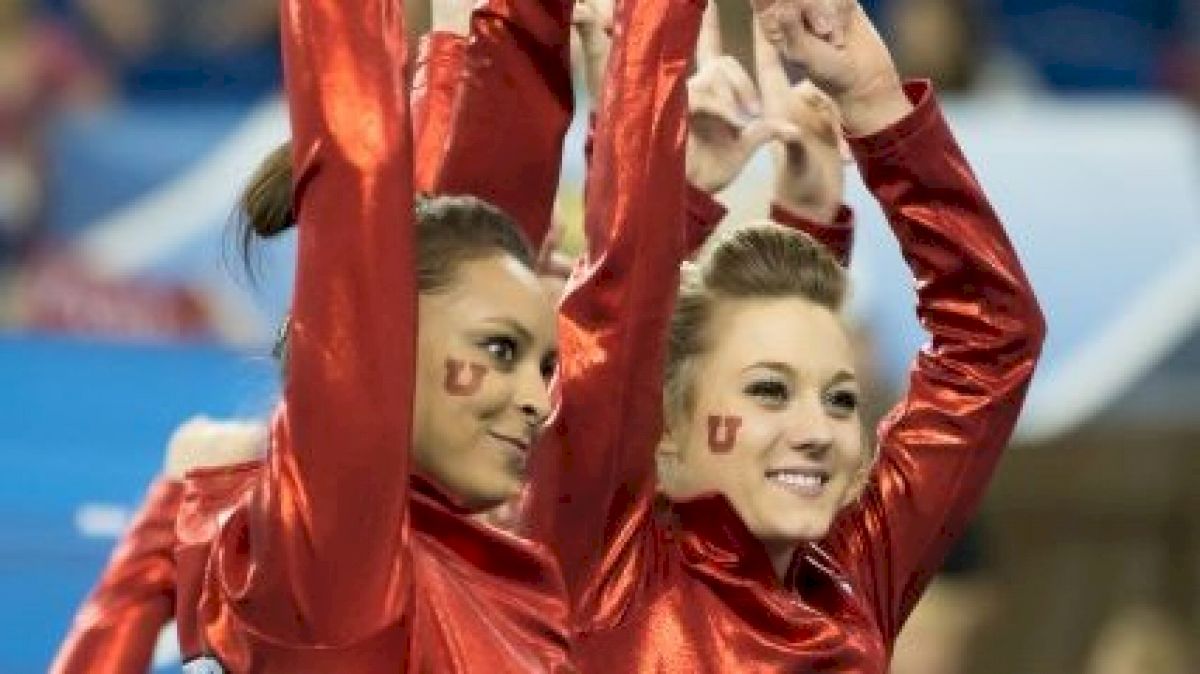
The Five Things We Learned at NCAAs
by Becca Johnson
On the heels of a weekend chock-full of highs and lows, the NCAA Championships have come to an end and the Florida Gators walk away with the three-peat. In both victory and defeat, every team that qualified for this prestigious competition is among the best in collegiate gymnastics.
by Becca Johnson
On the heels of a weekend chock-full of highs and lows, the NCAA Championships have come to an end and the Florida Gators walk away with the three-peat. In both victory and defeat, every team that qualified for this prestigious competition is among the best in collegiate gymnastics.
1. Rankings are just rankings
It’s all about who shows up on meet day. Stanford and Auburn came out strong in prelims to upset numerous teams and earn themselves spots in the Super Six competition.
In the first session, Stanford put up solid performances through the entire competition highlighted by a 49.575 bar rotation. Fighting for every tenth, the Cardinal squeezed into the Super Six with a 197.175—edging out Michigan who tallied a 197.025. It was Stanford’s seventh Super Six qualification in program history and its first since 2012.
Auburn fought all season to prove themselves as a top team and peaked at just the right time. In the second session of prelims, the Tigers finished third behind Oklahoma and Alabama to capture the last spot in Super Six. They notched a 197.075, a program record score at nationals and the sixth-highest score in school history. It was the first Super Six qualification for the Tigers in 22 years, with their only other appearance being in 1993. In Super Six, Auburn fell a little short of their normal stellar showing, finishing with a 195.625. Nonetheless, the Tigers should be nothing but proud of their top-six finish.
Unfortunately, for certain teams, it also comes down to who doesn’t show up on meet day. LSU ranked in the top four nationally every week of the season and went undefeated in the SEC regular season competition, however, a disastrous performance on beam in prelims eliminated them from the Super Six competition.
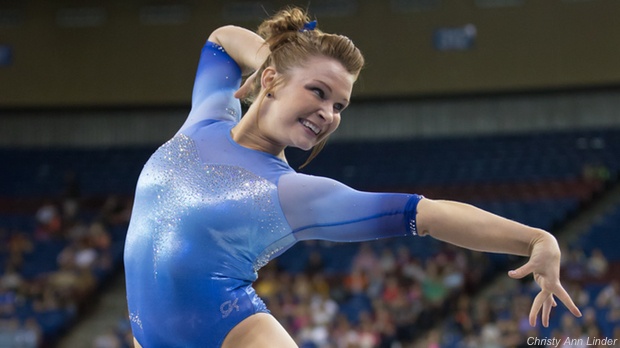
2. Florida is unstoppable
The Florida Gators had a lights out Super Six performance and captured the National Championship for the third year in a row with a 197.850. After a spectacular showing on floor where they achieved a 49.65 total, it was a tight race all the way to the finish and came down to the last routine on bars. A rock-solid routine from Alex McMurtry was able to give Florida the edge over Utah by just 0.05.
Coming off a season riddled with injuries to key competitors, the victory was sweeter for Florida. Head Coach Rhonda Faehn described the road as “rocky and full of adversity.” But that is what prepared the team to shine like they did under the spotlight of Super Six Finals.
3. Resiliency is key
Just like any high-stake competition, there were several unexpected missteps throughout the weekend, but what stood out was the comeback efforts in both individual and team performances. Some of the most notable successes came after serious struggles.
During session one of prelims, Bridget Sloan took a tough landing on her second floor pass, which she has only been able to train a couple times a week after sustaining a severe ankle sprain in January. She scored a 9.675 to open the meet, essentially taking herself out of the running for the all-around title right from the start. But it didn’t phase Sloan as she pressed on with a smile and came back to help her team advance to Super Six. She went on to prove her toughness with a strong 9.95 floor routine during the Super Six Final.
Similarly, during prelims in session one, Utah started on beam and had a fall in the second spot from star senior, Georgia Dabritz. However, the final gymnasts put up impressive routines allowing Utah to finish the rotation with a 49.175. The Utes went on to tie with Florida (197.475) for the top spot in session one. Dabritz also bounced back after her mistake on beam to close the meet with a stunning 10.0 bar routine, which she matched during Super Six. Not only were her two 10.0 performances the only perfect scores of the weekend, but Dabritz made history for Utah by earning the team’s first-ever 10.0 at Nationals. She closed out her career by earning the crown on bars in Event Finals with a 9.9625.
4. The pressure of beam can cause even the strongest teams to crack
LSU suffered a very uncharacteristic beam rotation during session two of prelims to lose an opportunity for a spot in the Super Six competition. After an incredible year and a 13-1 regular season record, the Tigers were expected to be in the running for a national title. As D-D Breaux described, the team “lost their nerve,” on beam and when things went awry, they simply couldn’t bring it back together. LSU closed the event with a 48.275 on the event, making it virtually impossible to finish in the top three. After a respectable finish on floor, the Tigers totaled a 196.55 to take fifth in session two. It was a disappointing end to LSU’s season, but one that will surely leave them hungry for next year.
OU also felt the immense pressure on beam, as they were forced to count a fall during prelims. They finished with a 197.40 to take the top spot in the session and land in the Super Six, but it proved that no team is safe from the wrath of the beam.

5. Freshmen are capable of clutch performances
There are some key freshmen in particular that were able to thrive under post-season pressure and make remarkable impacts on their teams during the Super Six competition.
Elizabeth Price erupted as a strong force for Stanford this year and during Super Six, she nailed a 9.9 floor routine after a shaky start for the team on the event. She competed in the all-around for the first time in her Stanford career earning a 9.9 or above on every event for a total of 39.675—a score that would have won the all-around competition during prelims. Price went on to win the Vault title in Event Finals on Sunday with a 9.9333.
After an unexpected fall on bars from fifth up Haley Scaman during Super Six, freshman Brenna Dowell anchored with ease to help OU notch a 49.30 on the event and a 197.525 total, which was good enough for third place.
The first five bar routines of the very last rotation of Super Six left the Gators just 0.075 behind Utah. Although she didn’t know the weight of her performance at the time, freshman anchor McMurtry’s routine would determine the National Champion. Under ultimate pressure, McMurtry was unwavering and able to dial in a 9.95 routine for the Gators to help them capture their third National Championship in a row.
Related:
Super Six Results and Recap
Event Finals Results and Recap
The Photo Story of the Super Six
Six Spectacular Moments from the Super Six
Videos and Interviews from 2015 NCAAs
Related:
Super Six Results and Recap
Event Finals Results and Recap
The Photo Story of the Super Six
Six Spectacular Moments from the Super Six
Videos and Interviews from 2015 NCAAs
Related Content
 Replay: Lander vs Mars Hill | Mar 28 @ 6 PM
Replay: Lander vs Mars Hill | Mar 28 @ 6 PMMar 29, 2024
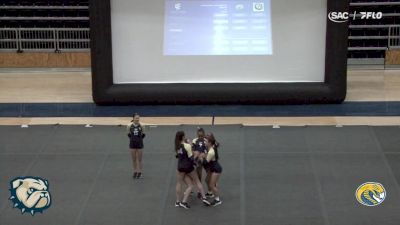 Replay: Coker vs Wingate | Mar 21 @ 6 PM
Replay: Coker vs Wingate | Mar 21 @ 6 PMMar 22, 2024
 Replay: Wingate Tri-Meet - Acrobatics & Tumbling | Mar 15 @ 5 PM
Replay: Wingate Tri-Meet - Acrobatics & Tumbling | Mar 15 @ 5 PMMar 15, 2024
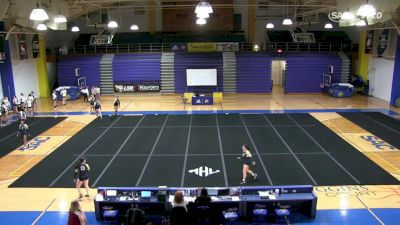 Replay: Mars Hill Tri-Meet | Feb 16 @ 6 PM
Replay: Mars Hill Tri-Meet | Feb 16 @ 6 PMFeb 17, 2024
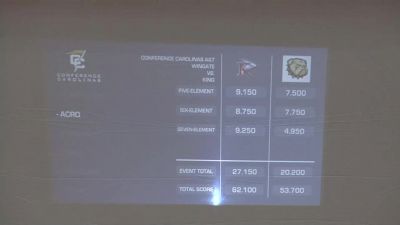 Replay: King (TN) vs Wingate - 2024 2024 King (TN) vs Wingate - Acrobatics & Tumbling | Feb 10 @ 4 PM
Replay: King (TN) vs Wingate - 2024 2024 King (TN) vs Wingate - Acrobatics & Tumbling | Feb 10 @ 4 PMFeb 10, 2024
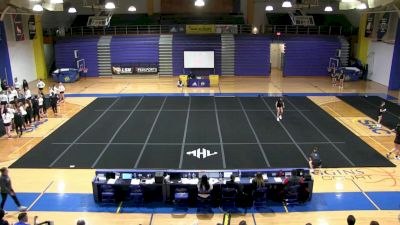 Replay: Belmont Abbey vs Mars Hill | Feb 10 @ 3 PM
Replay: Belmont Abbey vs Mars Hill | Feb 10 @ 3 PMFeb 10, 2024
 Replay: King vs Mars Hill | Apr 6 @ 6 PM
Replay: King vs Mars Hill | Apr 6 @ 6 PMApr 7, 2023
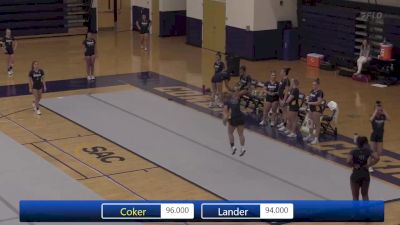 Replay: Lander vs Coker | Apr 5 @ 6 PM
Replay: Lander vs Coker | Apr 5 @ 6 PMApr 6, 2023
 Replay: Belmont Abbey vs Limestone | Apr 5 @ 6 PM
Replay: Belmont Abbey vs Limestone | Apr 5 @ 6 PMApr 6, 2023